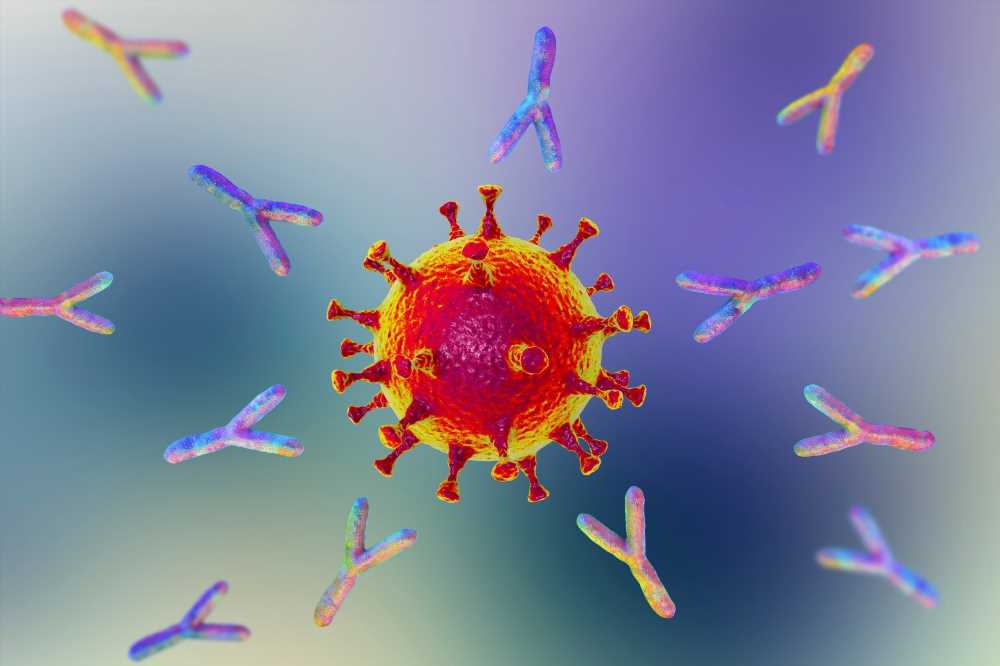In a recent study published in eBioMedicine, researchers performed a proteomic multiple-reaction monitoring analysis of 91 pre-selected proteins using the plasma samples of 156 healthcare workers (HCW) in the United Kingdom (UK).

In addition, the team showed how plasma proteome signatures could help track coronavirus disease 2019 (COVID-19) symptom severity and antibody responses.
Background
During the first wave of the COVID-19 pandemic starting in March 2020, just a few infected individuals required hospitalization. Yet, people had different symptom burdens and clinical courses, with some individuals experiencing more persistent symptoms lasting weeks or months. Some even experienced post-acute sequelae of severe acute respiratory syndrome coronavirus 2 (SARS-CoV-2)(PASC).
About the study
In the present study, researchers recruited HCWs at St. Bartholomew's Hospital, London, UK, between 23 and 31 March 2020, i.e., during the first wave of the COVID-19 pandemic. They hypothesized that the plasma proteome at that time would reflect differences in the inflammatory response associated with COVID-19 symptom severity and duration.
The team evaluated these HCWs weekly via questionnaire and collected biological samples for PCR and serological assays for up to 16 weeks. The study follow-up continued for up to 12 months. Further, the team included all participants with available plasma samples and a reverse transcriptase-polymerase chain reaction (RT-PCR)-confirmed SARS-CoV-2 infection between weeks zero and six as ‘cases.’
For proteomic analysis, the researchers used a previously developed custom-targeted mass spectrometry (MS)-based assay panel that reviewed over 90 pro- and anti-inflammatory associated plasma proteins. The panel included proteins associated with acute phase proteins, apolipoproteins, complement factors, coagulation cascade components, interleukin signaling pathway members, and inflammation modulators. Notably, nearly 25% of the panel comprised neuroinflammatory biomarkers.
Finally, the researchers performed a differential expression analysis of all assayed proteins using a false discovery rate (FDR) threshold of 0.05 and a log2 fold change threshold of 1.5. The final analysis covered only those pathways with a p-value of ≤ 0.05.
Study findings
A total of 54 HCWs had RT-PCR or antibody-confirmed infection, and 44% were male. The remaining 102 were uninfected controls, of which 38% were male. The principal component analysis (PCA) of the plasma proteome of HCWs with PCR-confirmed SARS-CoV-2 infection was indistinguishable from that of uninfected HCWs in the week before contracting COVID-19. The earliest detectable perturbation coincided with the first RT-PCR positive test result. The proteome perturbation progressively accentuated in subsequent weeks, resulting in the complete separation of groups from week-five onwards. Further, the authors noted that perturbation of the plasma proteome persisted for up to six weeks after infection.
The study analysis also revealed some important drivers of proteomic perturbation, including oxidative stress markers, metabolic reprogramming factors, and cell adhesion molecules. The researchers found no significant association between anti-spike subunit 1 (S1) and anti-nucleocapsid (NP) levels at baseline in those with persistent symptoms out to 12 months. Within the study assay, one of the most strongly predicted persistent symptoms was due to anti-coagulant amyloid precursor protein (APP).
Pathway enrichment analysis of HCW samples who had non-severe SARS-CoV-2 infection revealed differentially enriched proteins coordinated around lipid, atherosclerosis, and cholesterol metabolism pathways. Other pathways implicated with these HCW samples included complement cascades, autophagy, coagulation, and lysosome function pathways. Further, the researchers documented that the plasma trajectory of E-selectin displayed the strongest correlation with symptom burden. This finding aligned with previous data that implicated endothelial markers, such as E-selectin, to SARS-CoV-2 infection severity.
Furthermore, the researchers showed that signature biomarkers at the time of seroconversion for SARS-CoV-2 were associated with the persistence of symptoms at the one-year timepoint. The most predictive biomarker per the Gini coefficient was HSCB. This iron-sulfur cluster biogenesis protein has been implicated in erythropoiesis and hematopoiesis. It’s released into the blood secondary to mitochondrial disruption from COVID-19-mediated red blood cell destruction.
HSCB has also been previously associated with tissue damage and impaired immunity which explains the noted association with persistent symptoms. The researchers, thus, likely detected surrogate indicators of possible mild pulmonary function impairment.
Conclusions
The current study showed that moderate or mild SARS-CoV-2 infection could perturb the plasma proteome for just about six weeks. However, the plasma proteomic signature at the seroconversion time served as a biomarker to help discriminate individuals who were more likely to suffer from persistent symptoms at a later stage.
- Gabriella Captur, James C. Moon, Constantin-Cristian Topriceanu, et al. (2022). Plasma proteomic signature predicts who will get persistent symptoms following SARS-CoV-2 infection. eBioMedicine. doi: https://doi.org/10.1016/j.ebiom.2022.104293 https://www.thelancet.com/journals/ebiom/article/PIIS2352-3964(22)00475-3/fulltext
Posted in: Medical Science News | Medical Research News | Disease/Infection News
Tags: Antibody, Anti-Inflammatory, Assay, Atherosclerosis, Autophagy, Biomarker, Blood, Cell, Cell Adhesion, Cholesterol, Coronavirus, Coronavirus Disease COVID-19, covid-19, Erythropoiesis, Healthcare, Hematopoiesis, Hospital, immunity, Inflammation, Interleukin, Mass Spectrometry, Metabolism, Oxidative Stress, Pandemic, Polymerase, Polymerase Chain Reaction, Protein, Proteome, Respiratory, Reverse Transcriptase, SARS, SARS-CoV-2, Severe Acute Respiratory, Severe Acute Respiratory Syndrome, Signaling Pathway, Spectrometry, Stress, Sulfur, Syndrome

Written by
Neha Mathur
Neha is a digital marketing professional based in Gurugram, India. She has a Master’s degree from the University of Rajasthan with a specialization in Biotechnology in 2008. She has experience in pre-clinical research as part of her research project in The Department of Toxicology at the prestigious Central Drug Research Institute (CDRI), Lucknow, India. She also holds a certification in C++ programming.
Source: Read Full Article
